Owning a rental property can be a great way to earn passive income and grow your wealth. But before you start interviewing potential tenants, you have to transform it from a cold, empty space into a welcoming, relaxing oasis that a person would actually want to rent. That means furnishing it.
You have to consider the cost of filling a second home with sofas, beds, end tables, coffee makers, and any other items that make a home nice to live in. And then there’s the major task of getting all that furniture moved inside and arranged just right.
But don’t fret too much! With some proper planning, you can turn your empty vacation home into a comfortable destination that gets rented out consistently — and at the price point you want
How Much Money Does It Cost To Furnish A Vacation Home?
The level of furnishing you do will depend on your budget. Awning.com estimates that the cost of furnishing a rental property can range from as low as $1,000-$2,000 for a smaller property to $50,000 or more for a luxurious vacation rental.
Sticking to the low end of that budget would require relying on secondhand and refurbished items. It also assumes that you don’t need to do any renovations. In this situation, you could opt for a few key pieces, such as beds, sofas, and a dining room set, which would be easier on your wallet. However, you want to ensure that your tenants are comfortable and have everything they need, which will encourage them to stay longer and come back again. And that’s going to require a larger investment.
“Steer clear of delicate fabrics like linen and silk. Vacation rentals often see a higher turnover of occupants than traditional homes. Hence, furniture should be durable and able to withstand wear and tear.”
A mid-tier budget would be around $20,000-$30,000, which ensures you are able to get everything you need for your renters to feel comfortable and cozy. You don’t need to make a media room that’s a miniature replica of a movie theater, but paying for paintings and decorations, pillows, chairs for a backyard/porch, and cooking implements goes a long way toward your renter’s enjoyment of their time spent at your vacation home.
How To Pick What Types of Furniture To Use
Choosing furnishings for a vacation rental involves careful planning to ensure that the space is appealing, functional, and comfortable for your guests.
You should first inventory everything you need. Necessary items include pieces like a comfortable bed with quality bedding, a couch, a dining table and chairs, a coffee table, and nightstands. But also consider extras for comfort and convenience, like a desk for a working space, outdoor furniture for a patio or balcony, or a cozy reading chair.
But just what kind of bed should you get? Here’s how to pick the best types of furniture for a vacation rental, which may differ from how you’d choose to furnish your personal home:
- Define your target audience: Start by determining who will be renting your vacation property. Will it be families with children, young adults, or perhaps older couples? Knowing your target audience will help guide your decisions on the type and style of furniture you need to purchase.
- Choose durable furniture: Steer clear of delicate fabrics like linen and silk. Vacation rentals often see a higher turnover of occupants than traditional homes. Hence, furniture should be durable and able to withstand wear and tear. Look for leather or performance fabrics, as they are easy to clean and maintain.
- Use neutral tones: Neutral colors tend to appeal to a wide range of people and they can make a space look clean and welcoming. You can add pops of color with accessories like cushions, throws, and artwork.
- Aim for a functional layout: Make sure the furniture layout makes sense and allows for easy movement around the space. Also, be sure to point chairs and couches at the entertainment center or next to the fireplace.
- Provide storage space: Ensure there’s plenty of storage for guests to unpack their belongings. This can be in the form of wardrobes, drawers, or hooks and shelves.
- Pick a style: Try to choose a consistent style for your vacation rental that matches the location and architecture. Whether it’s rustic, modern, beachy, or traditional, consistency in style can make the property look thoughtfully designed and more appealing.
- Add in some decorative Items: Art and accessories can add personality and charm to your rental property. Just remember to keep it tasteful and not overly personal. For example, as lovely as your personal collection of figurines might be, your vacation home isn’t the right place to display it.
See prices for local moving labor. Read real customer reviews. Easily book your help online.
Tips on Transporting Furniture
Once it comes time to get your vacation rental furnished, you’ve now got to decide how you’re going to transport all of those heavy furniture pieces. You have some options, depending on how you’ve decided to furnish the place, so here are some tips to make the process as smooth as possible.
What if I want to use the furniture I already have?
If you own some furniture that you’d like to move into your rental, the first step is taking an inventory of all the furniture pieces you plan to move. This will help you keep track of everything during the moving process. While you’re inventorying, take the time to clean pieces that need it (wiping dust, removing stains, etc.). That way, everything will be move-in ready.
It’s also a good idea to measure all doorways and hallways in both your current space and vacation rental to ensure that your furniture will fit through without any issues. The last thing you want is to run into fit issues in the middle of the moving process.
Finally, you’ll also want to protect your furniture so that it doesn’t get damaged going from Point A to Point B. For the heaviest pieces, disassembling them and wrapping them in moving blankets or moving pads is the best way to go.
Hiring a moving company vs. DIY
You can certainly attempt to move and pack furniture on your own! If you’re moving smaller items or the distance you’re transporting them isn’t too far, you might be able to handle the move yourself with a rented moving truck.
However, depending on the size and quantity of the furniture, you might want to hire professional movers. Not only do they have the experience, but also the right equipment to move heavy and bulky items safely.
“…the cost of furnishing a rental property can range from as low as $1,000-$2,000 for a smaller property to $50,000 or more for a luxurious vacation rental.”
If you’re using a moving company, make sure your furniture is insured during the move. If you’re moving valuable items, you may need to purchase additional coverage.
In short, if you’re moving items that are bulky, fragile, or valuable, consider hiring hourly moving professionals, even if it’s simply for packing and loading/unloading only. You can still use your own transport to save some money. If you’re moving only smaller, less valuable items, then doing it yourself is likely easier on you and your wallet.
What if I want to buy all new furniture?
If you’ve decided to buy new furniture for your vacation home, you can most likely have it delivered directly to the new address by the retailer. Some furniture stores also offer assembly services, which can be very convenient, but do come at an extra cost. You’ll need to decide if saving some of your own time and effort is worth the added expense.
How To Take Care of Your Furnished Vacation Home
Here’s how you can ensure the furniture you invested in lasts a long time and stays looking new:
- Regular cleaning: Schedule regular cleaning sessions for all furnishings, and make sure to upkeep all areas of the home. Vacuum upholstery and carpets, dust surfaces, and clean stains promptly. Double-check the appropriate cleaning products and methods for different materials, which will help prevent damage.
- Use furniture covers: Consider using removable and washable covers for sofas and chairs to protect against spills and stains, especially if your property allows pets or if you have tenants with young children.
- Enforce tenant responsibilities: Clearly outline the tenant’s responsibilities for maintaining the furnishings in the rental agreement. This should include routine cleaning, prompt reporting of any damages or issues, and whether or not they’re allowed to move or adjust the furniture.
- Inspect and address issues promptly: Conduct regular inspections of the property, including the furnishings, to identify any damages, signs of wear, or pests such as bedbugs. Take care of any problems right away to prevent them from worsening.
- Use furniture pads: Attach furniture pads to the bottom of chair and table legs to keep them from scratching the floor.
- Avoid direct sunlight: Position furniture away from direct sunlight to prevent fading and damage.
- Keep humidity levels in check: If necessary, use a dehumidifier to maintain optimal humidity levels, which stops mold and mildew growth.
See prices for local moving labor. Read real customer reviews. Easily book your help online.
The Bottom Line
If you’re going to invest in owning and managing a rental property, you should ensure you create the most inviting space possible. That doesn’t mean you need to blow your budget on designer furniture, but you should allocate a good chunk of cash to furnishing your rental in a way that complements the space and provides a place that people will want to rent over and over.
Getting your furnishings in the door is the toughest part, so take your time prepping furniture to be moved. Invest in the right materials, and spend some time comparing quotes from qualified movers, if necessary. Once you have your space set up the way you want it, it’s all about maintenance going forward.










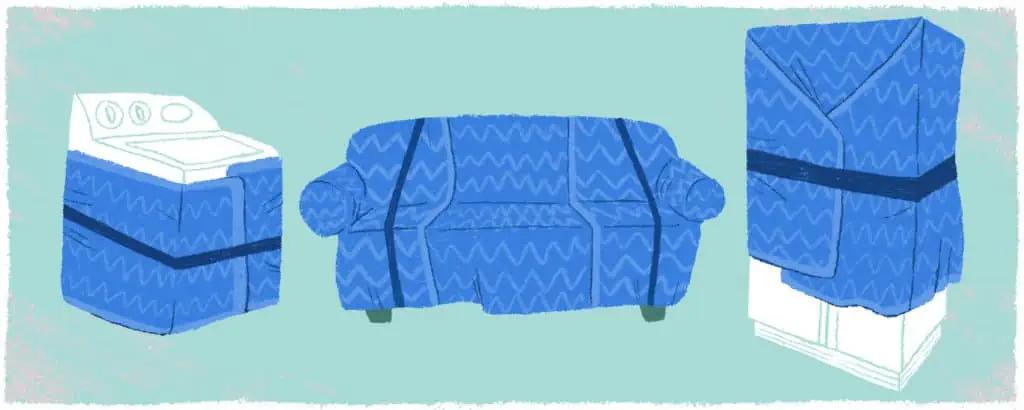
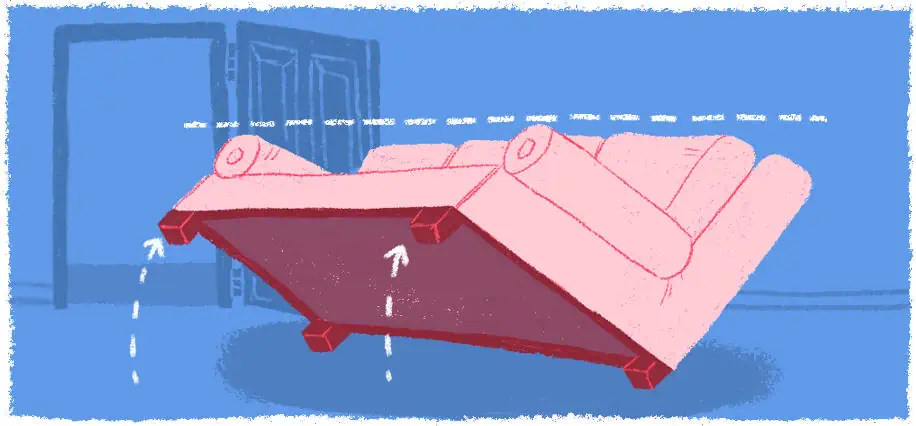
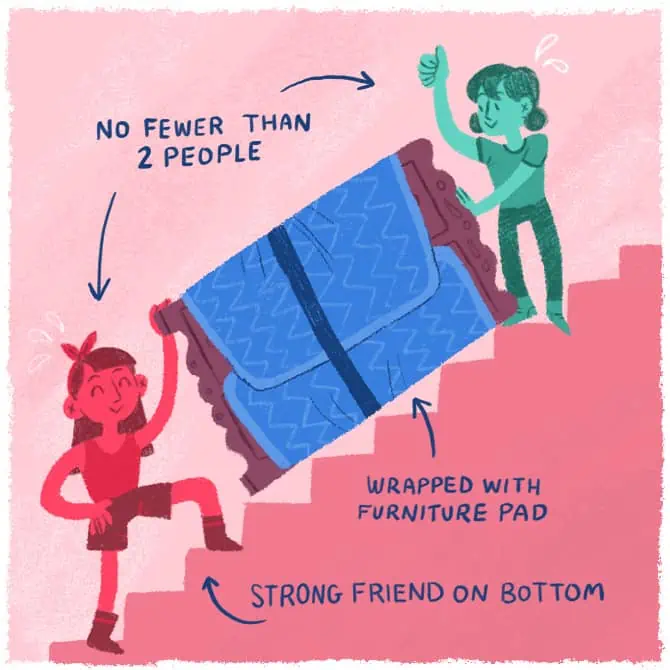

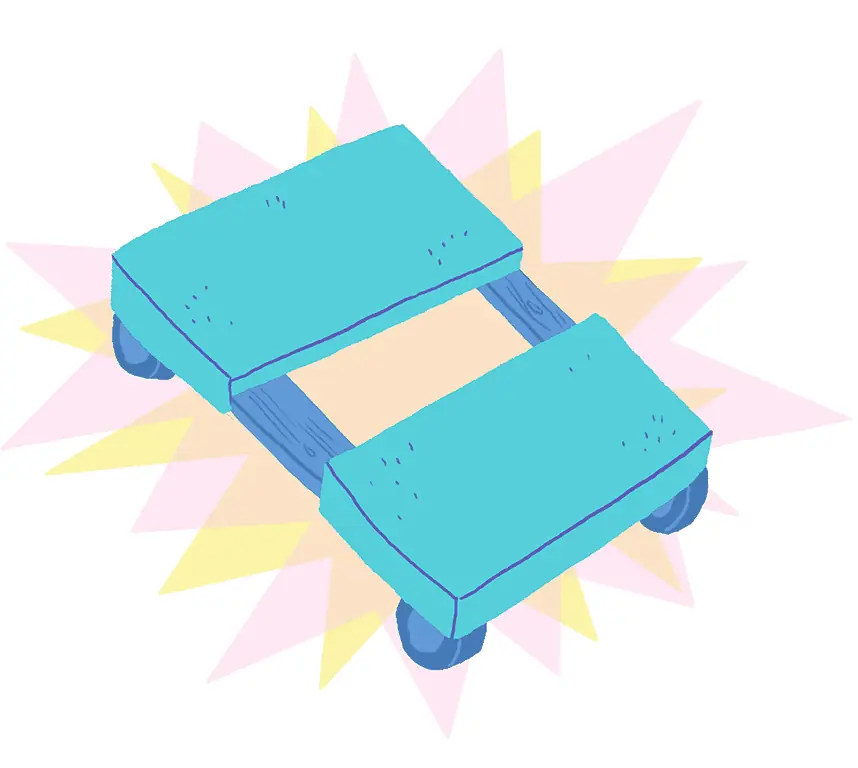
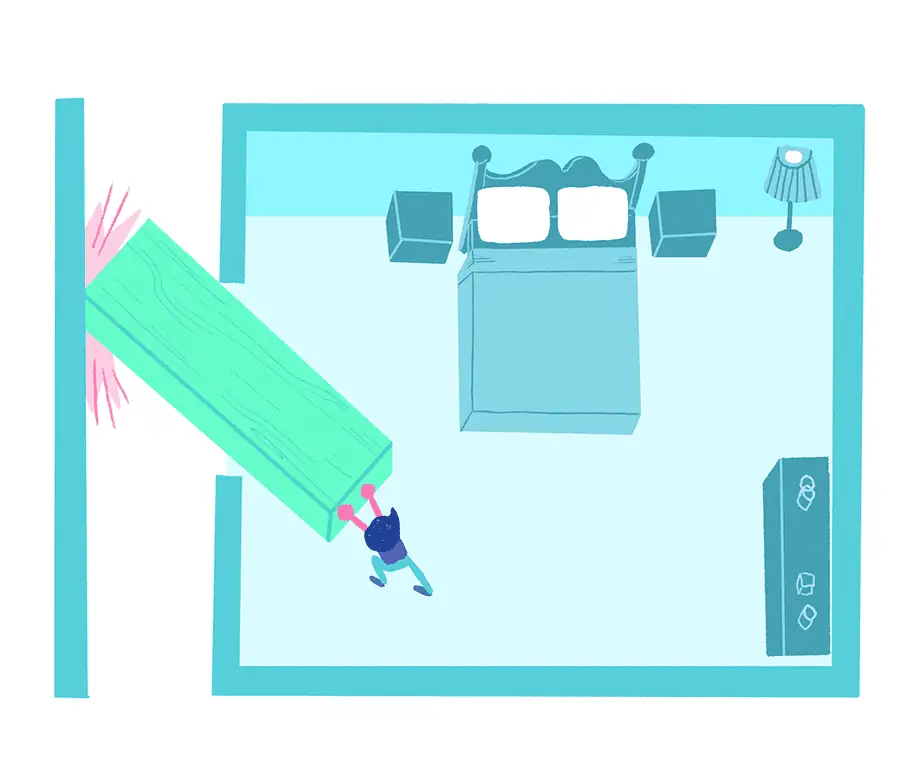



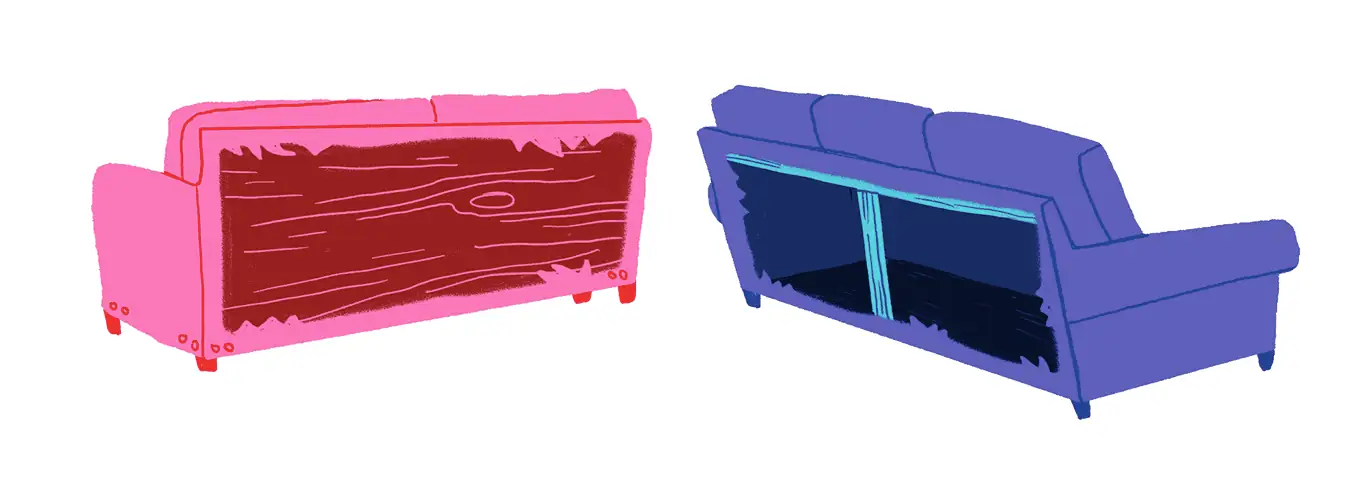

 You also need to keep an eye on the floor. A throw rug, the uneven spaces between floor tiles, even something as small and unassuming as a Lego can stop your dolly … while whatever is sitting on top of it keeps moving forward.
You also need to keep an eye on the floor. A throw rug, the uneven spaces between floor tiles, even something as small and unassuming as a Lego can stop your dolly … while whatever is sitting on top of it keeps moving forward.